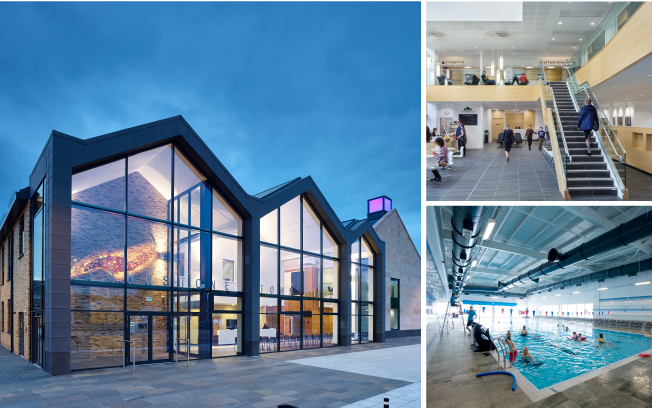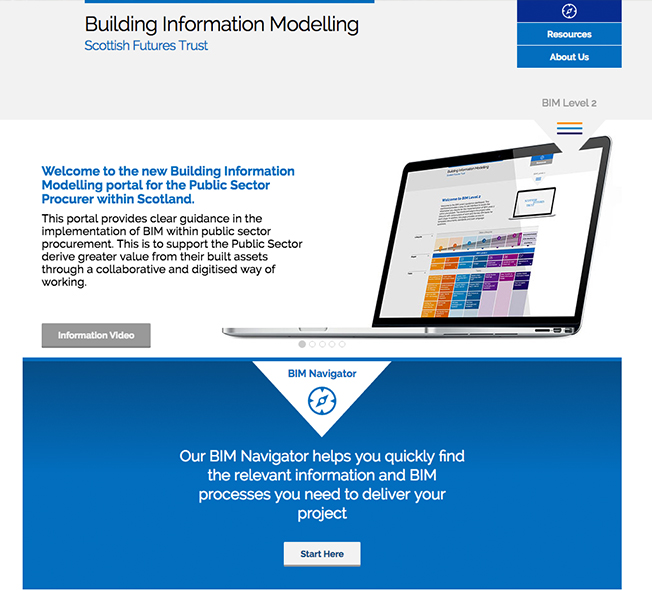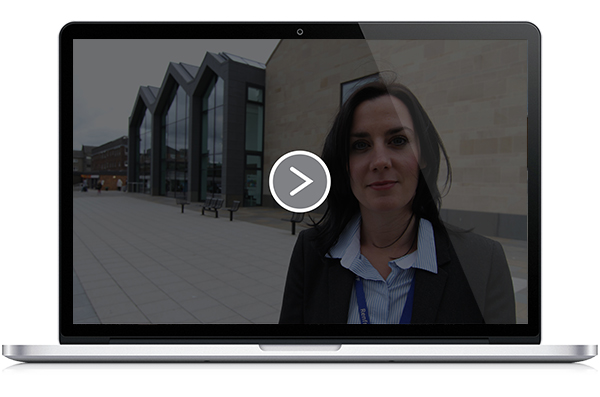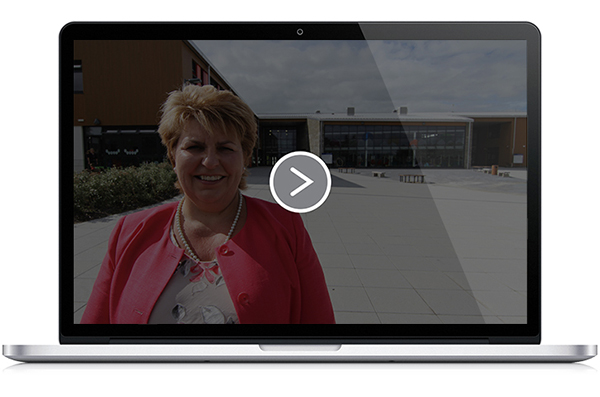 SFT build
SFT build
hub
- 100 individual projects completed and occupied
- 61 projects valued at over £1.1bn under construction
- Construction supporting over 9,000 jobs
- 79% of contracts awarded to SMEs
- Projects valued at over £400m in final stages of development
- 153 new graduate and over 770 apprenticeship positions created
- 15 awards won
The thinking behind setting up the Scotland-wide hub programme was to create five joint venture companies, consisting of the public and private sector, which would develop, build and manage first-class community infrastructure, delivering best value with community benefits embedded at the very heart of the programme.
And the figures above are testimony to its success.
Projects now up and running include secondary and primary schools, community health centres, fire & rescue stations and leisure centres. The scale of the economic and social impact the hub programme is having right across Scotland is huge.
The stand-out achievement during 2016 was to see 23 individual revenue funded projects reach financial close. Valued at £620m, these schools and health centres are now being built thanks to our innovative additional investment programme which is now securing long-term work for many hundreds of SMEs across Scotland.
A particular highlight during the year was the opening of our “Reference Design” Health and Care Centre in Eastwood which has been shortlisted for a Royal Incorporation of Architects in Scotland (RIAS) 2017 award. This is a joint project between NHS Greater Glasgow & Clyde and East Renfrewshire Council. It was developed to establish a value-for-money framework for other projects to follow and indeed improve upon. It has highlighted the growing need for new ways of working, helping accelerate the plan towards bringing health and social care together.

And in delivering first-class facilities, collectively, the five hub companies picked up a staggering 15 design and community awards. One project that stands out is the James Gillespie’s High School Campus in Edinburgh, which at the 2017 Scottish Property Awards picked up ‘Development of the Year (public buildings)’ and ‘Architectural Excellence Award (public buildings).’ Comprising a combination of new build and the refurbishment of a grade A listed building, the completed school was described by the Head Teacher Donald Macdonald as: “A campus that elevates the environment for learning in the 21st century to spectacular new heights.”
Objectives for 2017/18
- See construction start on six revenue funded schools and community health facilities, valued at c.£180m, supporting 1,400 construction jobs and creating 70 new apprenticeships
- Hand over 12 revenue funded schools and health facilities
- Support the adoption of new ways of working arising from key recommendations in the Construction Procurement Review
- Continue to support the programme to help bring about enhanced collaborative opportunities
Education
Schools built within the Scotland’s Schools for the Future programme aren’t schools in the traditional sense. These new and inspiring environments are built with the community at their heart, delivering bright and airy, stimulating places for pupils, teachers and communities to benefit from.
They are schools for the future, driven by advances in new teaching methods, technology and a focus to make these large, multi-million infrastructure projects deliver great value to communities in which they are built.
When the Scotland’s Schools for the Future programme was launched, the budget was £1.25bn for 55 new or refurbished schools. By encouraging councils to work together and by carefully managing the programme and its budget, we increased that number to 67 – 12 extra schools from the same budget.
Buoyed by our ambition and management of the programme, Scottish Government more than doubled the original number of schools to 112 and increased the budget to £1.8bn.
At the start of this new financial year, across the programme 50 schools have been completed, providing over 24,000 pupils with improved, first-class facilities with many more thousands to benefit in future years.
It’s not just pupils and teachers who are reaping the benefits of these first-class facilities. So too are communities. Following in the steps of our Schools Pilot which was set up to ensure schools achieve best value, we’ve been encouraged by the number of councils opening up the doors of their new schools for local communities to use and enjoy. Libraries, swimming pools, sports halls, fitness areas, meeting spaces and IT suites are just a selection of the new facilities the public now has access to far beyond the traditional school day.
Further pushing the boundaries of school design we’re working with our partners to develop creative and innovative projects as part of the £5m Inspiring Learning Spaces investments which demonstrates ambition, promotes change and offers new and different approaches from which others can learn. We’ll build on this work during the coming year as these projects become operational and experiences can be shared.
Building on the success of the Scotland’s Schools for the Future programme, we’re working with our Scottish Government and local authority partners to shape their investment in Early Learning and Childcare (ELC) provision thereby providing input to the Care Inspectorate led Design Guide.
This will lead us to fully consider and report on the impact, cost and the options to support delivery of the emerging infrastructure requirements for the programme.
Objectives for 2017/18
- Have 13 more schools under construction
- Have 23 more schools open, exceeding the programme milestone of having 67 schools open by March 2018
- Work with Scottish Government and local authorities to publish findings on the outcomes of the Scotland’s Schools for the Future programme
- Manage the £1.1bn Scottish Government budget within the £1.8bn Scotland’s Schools for the Future programme
- Share best practice in the development and delivery of educational infrastructure to achieve great design, better value for money and improved energy efficiency with a focus on delivering a low carbon school
- Promote the implementation of the delivery focused recommendations of the Construction Procurement Review including incorporating project bank accounts and BIM modelling into the remaining schools in development where appropriate
- Engage with local authorities to support the development of their ELC plans including emerging infrastructure requirements for the programme
- Work with the Care Inspectorate in the development and publication of a Design Guide for the ELC sector
- Complete ELC infrastructure progress report for Scottish Government to inform the capital investment between now and 2020
Assurance and Improvement
The construction industry is one of the most diverse industries there is. While dominated by many thousands of SMEs the vast majority of whom can be seen on building sites day in, day out, there are just as many working behind the scenes to ensure building design and construction follow exacting standards.
And it won’t come as any surprise that computer software and digital technology are at the very heart of that process.
As Scotland’s construction sector continues to move at pace towards becoming digitised, the management of data and information is now seen as a key mechanism for the public sector to secure greater efficiencies during the construction and operational stages.
This process of accurately creating and managing this digital information is referred to across the world as Building Information Modelling (BIM). BIM is fundamentally a collaborative process for generating and managing a digital picture of a building using technology to improve the sharing and analysis of data across the whole life of a building.

Such is the importance of BIM, that as from April 2017 public sector procurers will be required to adopt BIM where appropriate. Working towards that date and underlining our expertise in this field, we developed and launched a new dynamic guidance portal that has the power to transform and improve public sector infrastructure procurement and management forever.
In a similar vein, our infrastructure and construction expertise was utilised in developing a Whole Life Appraisal Tool for Construction.
The cost for a building doesn’t just end after it has been built. Being able to accurately calculate what the whole lifetime cost is for a new school or health centre, can help public bodies manage their future budgets accordingly.
Our Whole Life Appraisal Tool for Construction provides public bodies with simplified and flexible whole life cost reporting. More importantly, the new tool allows the public sector to calculate how those whole life costs can be influenced and reduced during the early design stage.
For the year ahead, we’re on track to develop and launch an on-line community infrastructure benchmark database as well as support the adoption of the whole life appraisal tool. We’ll continue to provide key stage reviews on projects included in the revenue funded programmes. Several members of the team hold positions on project and programme boards; helping deliver even greater assurance to the public sector.
We’ve also played an important role in the development of an updated Capital Investment Manual for NHS Scotland which was launched at the end of March 2017. It includes reference to guidance arising from work on the Construction Procurement Review.
For the year ahead, we’ll be working alongside Scottish Government in piloting approaches to shape changes in key elements arising from the Planning Review.
In addition, over the next 12 months, we’ll review the public sector infrastructure landscape and if appropriate, develop options and recommendations for new procurement approaches for investment in and maintenance of community facilities.
Objectives for 2017/18
- Complete launch of the Whole Life Appraisal toolkit and Community Infrastructure Benchmark Database and work with pathfinder projects on our programmes to embed new approaches
- Complete development of BIM Guidance and implement a programme of support for adoption across the public sector
- Bring together and disseminate good practice on post project review and benefits realisation management, including selective applications on live projects
- Appraise new long term options for the procurement, construction and maintenance of community infrastructure such as schools and health centres.

